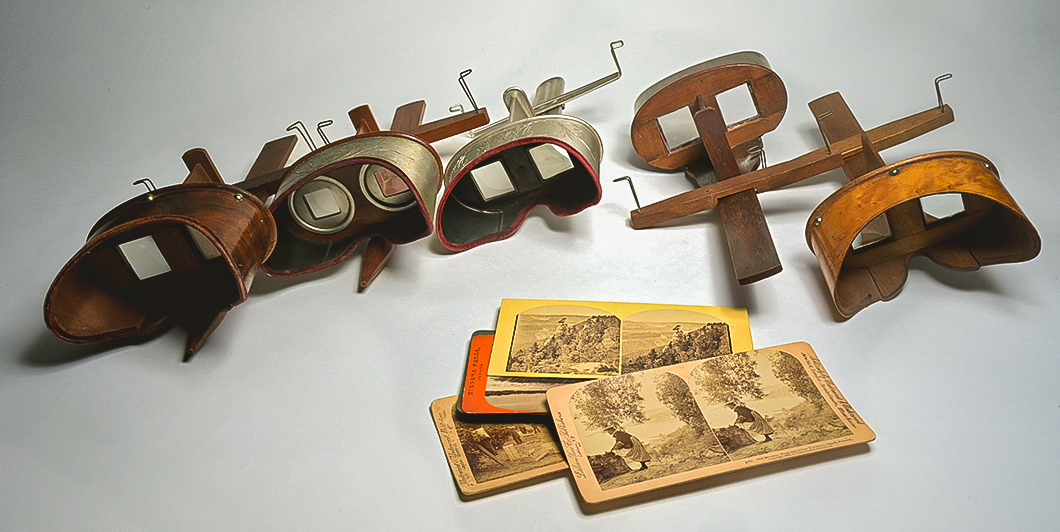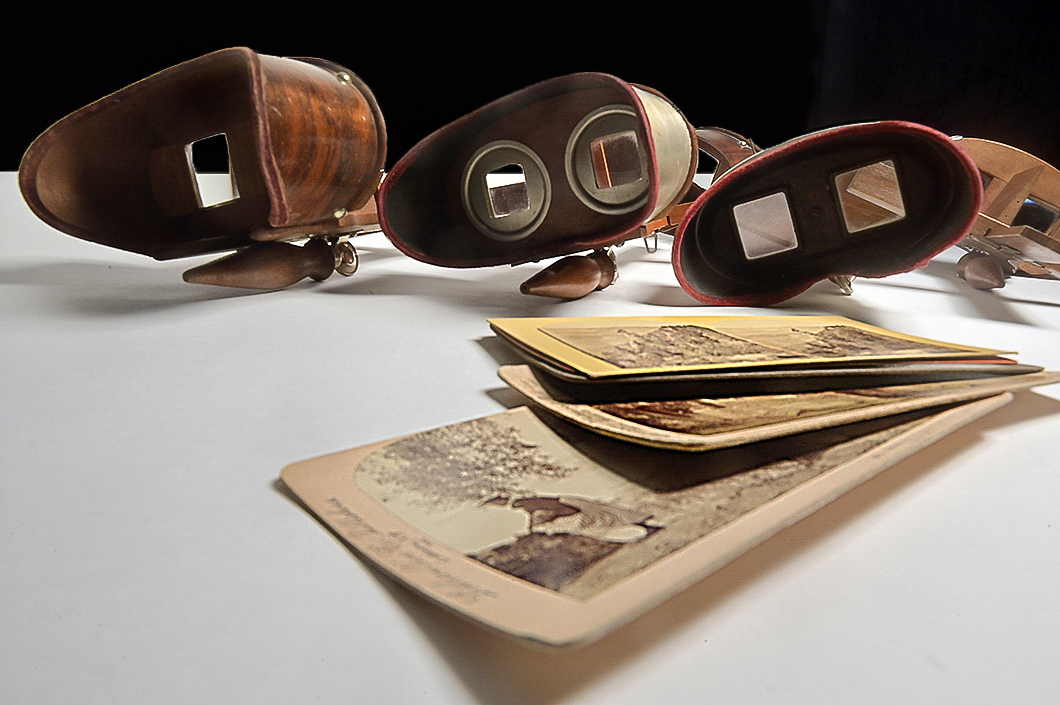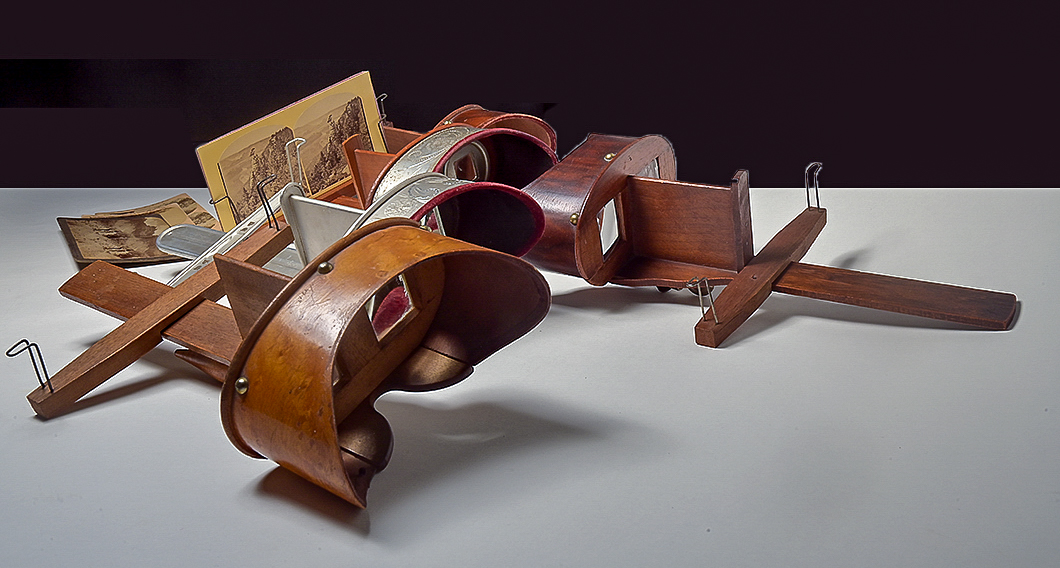STEREOSCOPES
INVENTION
The history of the stereoscope viewer is both technologically fascinating and culturally significant. It represents an early form of “virtual reality” and was one of the most popular ways to experience photography in the 19th and early 20th centuries.
The idea of viewing images in three dimensions stems from the principle of stereoscopic vision – meaning that our eyes see the world from two slightly different angles, and the brain merges them into one image with depth. The stereoscopic camera, whose photographs were published on stereocards and viewed through stereoscope viewers, made it possible to imitate how we see and experience images in 3D.
TIMELINE
1838: British inventor Sir Charles Wheatstone described and built the first stereoscope – though it was for drawings, not photographs. His version was large and unwieldy compared to later inventions.
1849: Scottish scientist David Brewster improved the design and made the stereoscope smaller and more practical. His version became the foundation for the classic handheld stereoscope.
1859: Oliver Wendell Holmes Sr. – American physician and writer – designed an inexpensive and popular version of the stereoscope that was mass-produced (the so-called Holmes stereoscope). He did not patent the design, allowing it to be freely distributed.

HOLMES STEREOSCOPES WITH STEREOCARDS, ca. 1861. LATERNA MAGICA MUSEUM COLLECTION.
USE
The stereoscope became a global phenomenon during its golden age (ca. 1850–1910), especially in middle-class homes. Stereocards with images from around the world were sold by the millions. People could “travel from their armchairs” and experience exotic landscapes, famous landmarks, and historical events in 3D. The stereoscope was also used in education, science, and military reconnaissance.
LEGACY
Around the time of the First World War, interest began to decline as new media like film – and later television – took over the role of entertainment. At the same time, the production of stereocards became more expensive compared to mass-media. However, interest in stereoscopy never fully disappeared, and today many people collect old viewers and stereoscopic photographs.
The legacy of the stereoscope lives on in 3D glasses and VR headsets, the View-Master (a toy from 1939 based on the same principle), and in modern 3D photography and film.

HOLMES STEREOSCOPES WITH STEREOCARDS, ca. 1861. LATERNA MAGICA MUSEUM COLLECTION.
HOLMES-STEREOSCOPES
On this page, you can see various Holmes stereoscopes – named after Oliver Wendell Holmes, who designed a popular version in the mid-19th century. The handheld Holmes stereoscope was often made entirely of wood and included a handle. Some also had metal fittings with engravings and stamps. The device was used to view so-called stereocards – paired photographs taken with a stereoscopic camera that simulated the view from the left and right eyes, enabling the image to appear in 3D.
The Holmes stereoscope consisted of a viewer shaped like a mask with two glass lenses. This was connected to a wooden stick with a sliding card holder for the stereocards. The holder could be adjusted until the image appeared in 3D. Below the holder was an elegantly crafted handle, making it easy to view the images.

HOLMES STEREOSCOPES WITH STEREOCARDS, ca. 1861. LATERNA MAGICA MUSEUM COLLECTION.

HOLMES STEREOSCOPES WITH STEREOCARDS, ca. 1861. LATERNA MAGICA MUSEUM COLLECTION.

